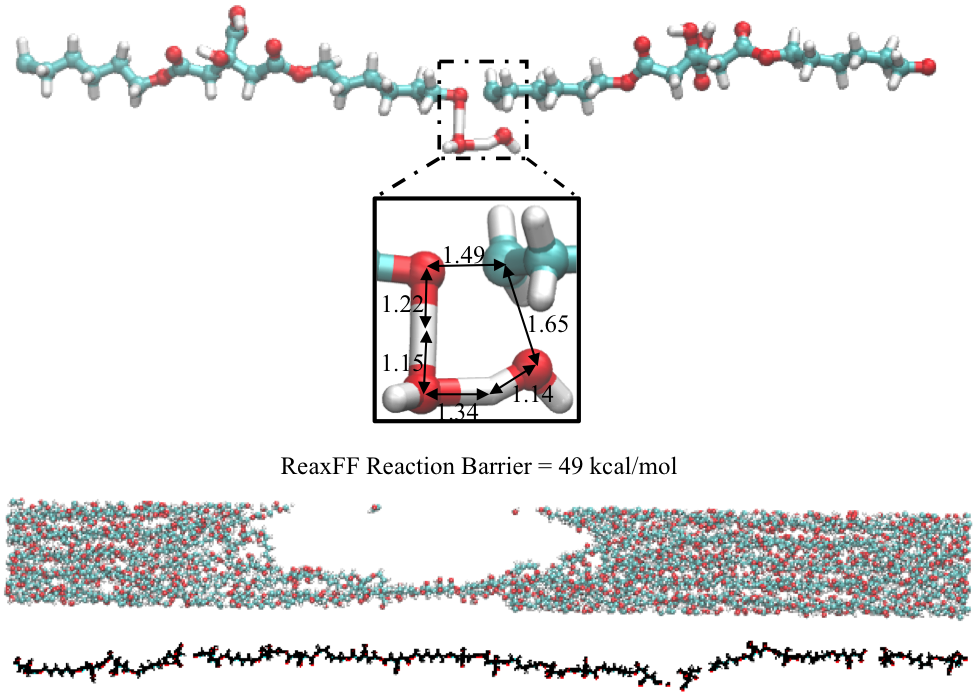Accelerated ReaxFF simulations of biodegradation of polymers
Biodegradable polymers with elastic properties have gained tremendous attention in the field of tissue engineering. Polyesters are prevalent biomaterials used for fabricating scaffolds for bone tissues. Recently, the reactivity of hexanediol-co-citric acid was studied using accelerated reactive molecular dynamics simulations.
Due to the high activation energy barrier of ester and ether hydrolysis reaction we use the bond boost scheme within the ReaxFF framework (see also our tutorial). The selectivity of the bond boost parameter was established by tuning the bond boost parameters. Ester hydrolysis occurs with a lower barrier than ether hydrolysis. On reducing the bond boost parameters, the ether hydrolysis almost stops. The polymers were also mechanically tested to find its tensile modulus, showing strain-dependent behavior (see also tutorial on stress-strain). Polyesters are found to be more ductile than polyesther-ethers.

Let us know if you would like an example input!
Nabankur Dasgupta, Dundar E. Yilmaz, and Adri van Duin, Simulations of the Biodegradation of Citrate-Based Polymers for Artificial Scaffolds Using Accelerated Reactive Molecular Dynamics, J. Phys. Chem. B 124, 5311–5322 (2020)
Key conceptspolymers Reactivity ReaxFF